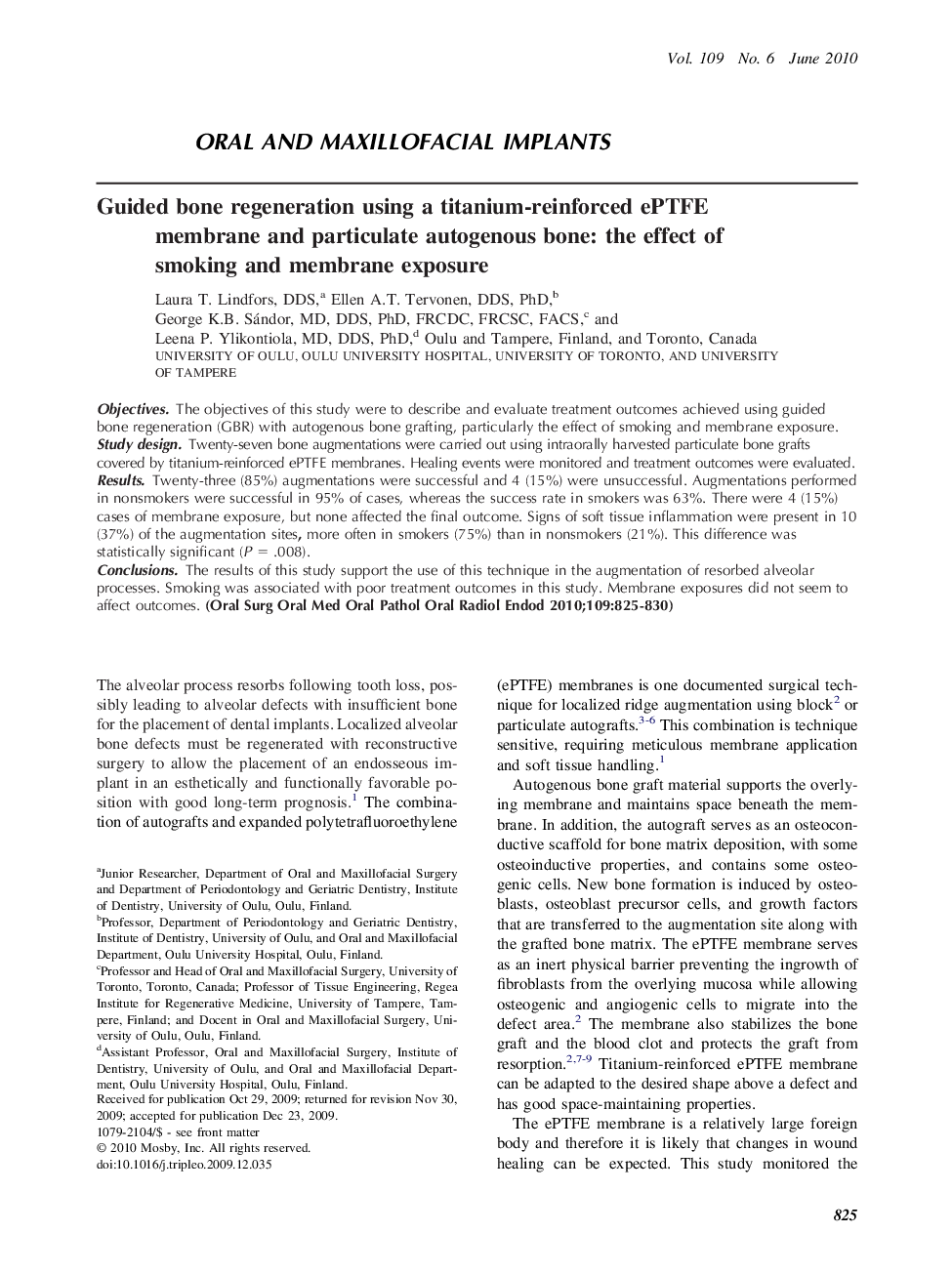| Article ID | Journal | Published Year | Pages | File Type |
|---|---|---|---|---|
| 3167351 | Oral Surgery, Oral Medicine, Oral Pathology, Oral Radiology, and Endodontology | 2010 | 6 Pages |
ObjectivesThe objectives of this study were to describe and evaluate treatment outcomes achieved using guided bone regeneration (GBR) with autogenous bone grafting, particularly the effect of smoking and membrane exposure.Study designTwenty-seven bone augmentations were carried out using intraorally harvested particulate bone grafts covered by titanium-reinforced ePTFE membranes. Healing events were monitored and treatment outcomes were evaluated.ResultsTwenty-three (85%) augmentations were successful and 4 (15%) were unsuccessful. Augmentations performed in nonsmokers were successful in 95% of cases, whereas the success rate in smokers was 63%. There were 4 (15%) cases of membrane exposure, but none affected the final outcome. Signs of soft tissue inflammation were present in 10 (37%) of the augmentation sites, more often in smokers (75%) than in nonsmokers (21%). This difference was statistically significant (P = .008).ConclusionsThe results of this study support the use of this technique in the augmentation of resorbed alveolar processes. Smoking was associated with poor treatment outcomes in this study. Membrane exposures did not seem to affect outcomes.
